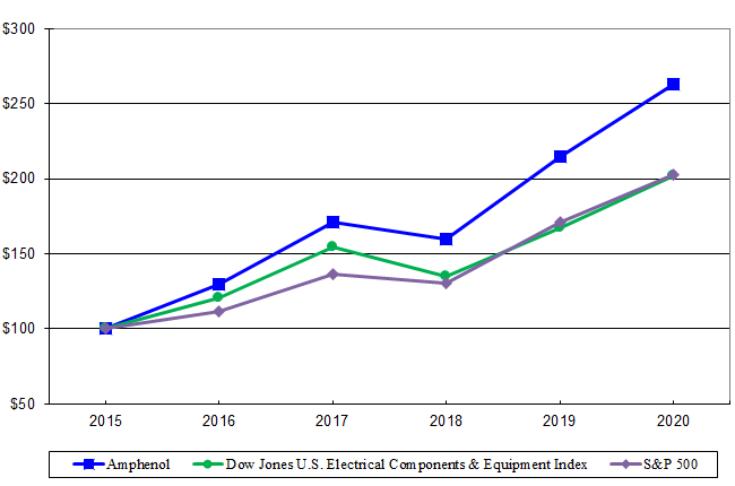On September 10, 2019, the Company issued $900.0 principal amount of unsecured 2.800% Senior Notes due February 15, 2030 at 99.920% of face value (the “2030 Senior Notes”). The 2030 Senior Notes are unsecured and rank equally in right of payment with the Company’s other unsecured senior indebtedness. Interest on the 2030 Senior Notes is payable semiannually on February 15 and August 15 of each year, commencing on February 15, 2020. Prior to November 15, 2029, the Company may, at its option, redeem some or all of the 2030 Senior Notes at any time by paying the redemption price (which may include a make-whole premium), plus accrued and unpaid interest, if any, to, but not including, the date of redemption. If redeemed on or after November 15, 2029, the Company may, at its option, redeem some or all of the 2030 Senior Notes at any time by paying the redemption price equal to 100% of the principal amount thereof, plus accrued and unpaid interest, if any, to, but not including, the date of redemption. In September 2019, the Company used the net proceeds from the 2030 Senior Notes to fund the cash consideration payable in the Tender Offers, with the remaining net proceeds being used for general corporate purposes, including to partially reduce outstanding borrowings related to the U.S. Commercial Paper Program.
All of the Company’s outstanding senior notes in the United States (the “U.S. Senior Notes”) are unsecured and rank equally in right of payment with the Company’s other unsecured senior indebtedness. Interest on each series of U.S. Senior Notes is payable semiannually. The Company may, at its option, redeem some or all of any series of U.S. Senior Notes at any time subject to certain terms and conditions, which include paying 100% of the principal amount, plus accrued and unpaid interest, if any, to the date of redemption, and, with certain exceptions, a make-whole premium. The Company’s 2021 Senior Notes are due in September 2021 and are therefore recorded, net of the related unamortized discount and debt issuance costs, within Current portion of long-term debt in the accompanying Consolidated Balance Sheets as of December 31, 2020.
Euro Senior Notes
On May 4, 2020, the Euro Issuer issued €500.0 (approximately $545.4 at date of issuance) principal amount of unsecured 0.750% Senior Notes due May 4, 2026 at 99.563% of face value (the “2026 Euro Notes” or the “0.750% Euro Senior Notes”). The 2026 Euro Notes are unsecured and rank equally in right of payment with the Euro Issuer’s other unsecured senior indebtedness, and are fully and unconditionally guaranteed on a senior unsecured basis by the Company. Interest on the 2026 Euro Notes is payable annually on May 4 of each year, commencing on May 4, 2021. Prior to February 4, 2026, the Company may, at its option, redeem some or all of the 2026 Euro Notes at any time by paying the redemption price (which may include a make-whole premium), plus accrued and unpaid interest, if any, to, but not including, the date of redemption. If redeemed on or after February 4, 2026, the Company may, at its option, redeem some or all of the 2026 Euro Notes at any time by paying the redemption price equal to 100% of the principal amount thereof, plus accrued and unpaid interest, if any, to, but not including, the date of redemption. The fair value of the 2026 Euro Notes is based on recent bid prices in an active market and is therefore classified as Level 1 in the fair value hierarchy (Note 5). The Company used the net proceeds from the 2026 Euro Notes to repay amounts outstanding under its Revolving Credit Facility.
On October 8, 2018, the Euro Issuer issued €500.0 (approximately $574.6 at date of issuance) principal amount of unsecured 2.000% Senior Notes due October 8, 2028 at 99.498% of face value (the “2028 Euro Notes” or the “2.000% Euro Senior Notes”, collectively with the 2026 Euro Notes, the “Euro Notes”, and collectively with the U.S. Senior Notes and 2026 Euro Notes, the “Senior Notes”). The 2028 Euro Notes are unsecured and rank equally in right of payment with the Euro Issuer’s other unsecured senior indebtedness, and are fully and unconditionally guaranteed on a senior unsecured basis by the Company. Interest on the 2028 Euro Notes is payable annually on October 8 of each year, commencing on October 8, 2019. Prior to July 8, 2028, the Company may, at its option, redeem some or all of the 2028 Euro Notes at any time by paying the redemption price (which may include a make-whole premium), plus accrued and unpaid interest, if any, to, but not including, the date of redemption. If redeemed on or after July 8, 2028, the Company may, at its option, redeem some or all of the 2028 Euro Notes at any time by paying the redemption price equal to 100% of the principal amount thereof, plus accrued and unpaid interest, if any, to, but not including, the date of redemption. The Company used a portion of the net proceeds from the 2028 Euro Notes to repay a portion of the outstanding amounts under its Commercial Paper Programs, with the remainder of the net proceeds being used for general corporate purposes.
The Company’s Senior Notes contain certain financial and non-financial covenants.

